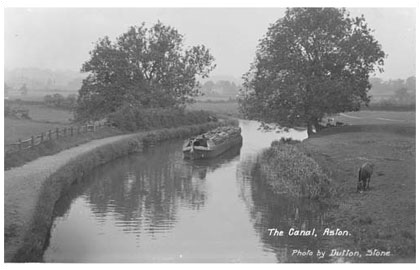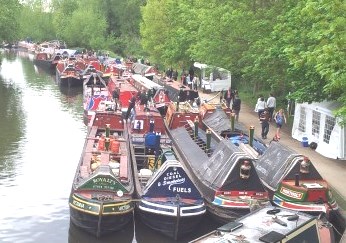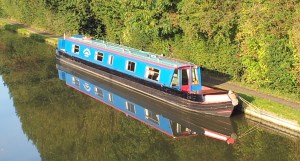The History of the UK's Canals
An Overview by Wyvern Shipping
Before 1750
Since Roman times, people in Britain have seen the merit in altering existing rivers or building short new waterways for irrigation purposes or for better navigation. In the Middle Ages, towpaths were added to many English rivers, like the Severn and Trent, to allow boats to be pulled by horses; these boats usually contained building materials for castles, monasteries and churches.
Between 1500 and 1700, around 29 nationwide improvements were made to rivers to facilitate the transportation of raw materials by boat, as an alternative to coastal shipping or using horses and carts on the mostly unsurfaced road system.

Period Between 1750 to 1840
The UK's canals as we know them today came about as a direct result of Britain's Industrial Revolution. The need to transport raw materials, goods and commodities in an efficient and economical way resulted in the building of thousands of miles of canals across England, Wales and Scotland. The first 'pure' canals were built that directly linked the areas where goods needed to go, rather than just enhancing existing rivers.
The two earliest canals, the Sankey Brook Navigation near Liverpool (1757) and the Bridgewater Canal near Manchester (1761), captured people's imaginations and led the movement that would create over 4,000 miles of canals. The Trent & Mersey Canal (1776) set the standard for maximum boat sizes due to the size of its tunnel (7 feet wide) and locks (72 feet 7 inches long by 7 feet 6 inches wide). The narrow boat was born. Pulled by just one horse, a narrow boat could transport 30 tons of goods in relative safety, compared to just 1 ton that could be taken by a horse and cart, where breakages stemming from the uneven road surface were also an issue.
Whole families would often live on a boat and would sometimes find themselves marginalised from land-based society. To cater for their spiritual needs, a 'church' houseboat was built that travelled the waterways, offering a place for families to worship!

Between 1840 to 1950
From around 1840 onwards, the burgeoning railway industry began to strongly compete with canals. Railways allowed transportation of a larger amount of goods in one journey and at a much faster speed. The \"Flyboat\" system was introduced by canal boat companies to help them remain competitive; these were canal boats that would work day and night, with the horse being changed regularly. They had a crew of three men on a rota system: two would work while one slept. However, by the 1850s cargo carried by canals had dropped by two-thirds. In spite of this, some canal systems continued to thrive, reaching areas that the railway did not, and supplying local markets such as factories requiring coal and the mills of big cities.
The improvement in road transportation in the first half of the 1900s started putting further pressure on the remaining commercial canal boat companies. Although there was a slight revival during the two world wars, by the 1960s almost all commercial use of the canals had ended, as remaining waterside factories requiring coal either switched to other fuels or gained better road access.

From 1950 to the Present Day
However, during the 1950s and 1960s, interest started to grow in using canals for leisure and recreational purposes. Canal carrying companies (like Wyvern Shipping) started converting their working boats into pleasure boats for people to enjoy holidays and day trips on the canals. This growth in holiday hire boats is one of the biggest reasons why the canal network continued to be maintained in the face of possible closures. There are currently around 2,200 miles of navigable canals and rivers throughout the UK, with one continuous system stretching from Bath in the South West all the way up to Ripon in North Yorkshire, along with numerous Welsh and Scottish canal systems. There are also numerous trusts in existence to restore abandoned stretches of canal and even to build new canals, like the proposed Bedford and Milton Keynes Waterway, which Wyvern Shipping strongly supports.
So, when you're on your Wyvern narrowboat, soaking up the sights and scenes that the UK's beautiful canals have to offer, you can feel a part of it's magnificent history.
Find Out More - Explore the Waterways for Yourself
If you fancy exploring the English canals first-hand, taking in it's varied sights and places of interest, how about going on a Wyvern Shipping canal boat holiday? Explore our website to find out more!
For more information on the history of the canals, please visit the History of the British canal system article on Wikipedia and the London Canal Museum website.
Black and white photograph: Trent and Mersey Canal near the bridge at Aston-by-Stone, 1916, with a canal boat being towed by a horse. From Staffordshire Arts & Museum Service. Used with kind permission. Source website: www.staffspasttrack.org.uk